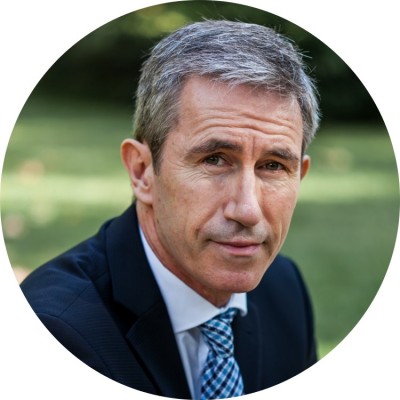Every year, thousands of people depend on the generosity of donors to prolong or save their lives through organ transplantation. Although transplant medicine has reached levels of sophistication unimaginable just a few decades ago, the gap between the need for and the availability of organs remains enormous. This article provides a global overview based on the most recent data and reflects on the advances and challenges that shape the current landscape of organ donation and transplantation worldwide.
Full article
Organ Donation and Transplantation Worldwide: Advances, Challenges, and Realities in 2024
Global Overview: Recent Figures
According to the Global Observatory on Donation and Transplantation, more than 172,000 solid organ transplants were performed worldwide in 2023, representing an increase of nearly 10% compared with 2022. That year, more than 45,000 deceased donors were reported across 77 countries, three-quarters of whom met criteria for brain death. In addition, more than 53,000 people became living donors, mainly of kidneys and livers.
During 2024, numbers continued to rise. Globally, around 17,000 deceased donors were recorded, with a 23% increase in cases of donation after circulatory death (DCD), which exceeded 7,200. In contrast, donation after brain death decreased slightly to around 9,700 cases. Approximately 7,000 living donations were also reported, remaining a crucial source of organs in countries with consolidated transplant systems.
In Europe, the Eurotransplant network reported that nearly one in four organs transplanted were exchanged between countries, reflecting strong international cooperation and optimization of organ allocation.
Spain: A Global Benchmark
If one country symbolizes sustained success in organ donation and transplantation, it is Spain. For over three decades, Spain has ranked first in the world in donors per million population, with a rate reaching 48.9 donors per million inhabitants in 2024, far above the European and global averages.
This leadership is largely due to the Organización Nacional de Trasplantes (ONT), created in 1989, which coordinates a highly professionalized hospital network, unified national protocols, and a deeply rooted culture of social awareness about donation. In 2024, Spain performed more than 5,800 organ transplants, including over 3,300 kidney, 1,200 liver, and nearly 400 heart transplants.
The Spanish model, based on clinical coordination, professional training, and family involvement, has been adopted or adapted by many countries. The World Health Organization (WHO) and the Council of Europe recognize it as an international reference, not only for its outcomes but also for its ethical and humanistic approach.
Distribution by Organ Type
The kidney remains the most transplanted organ worldwide, with over 111,000 procedures reported in 2023, followed by the liver with more than 41,000. At a greater distance come heart (around 10,000 transplants), lung (about 8,000), and pancreas (approximately 2,000).
In 2024, kidney and liver transplants continued to increase, while lung transplants grew proportionally the most, exceeding 10% annual growth. In the United States, there were over 27,700 kidney, 11,400 liver, 4,500 heart, and 3,300 lung transplants. The trend reflects steady progress—though still insufficient to meet global demand.
Challenges and Inequalities
Despite progress, the gap between supply and demand remains immense: current transplant activity meets less than 10% of actual needs. Every day, people die while waiting for an organ, especially in low- and middle-income countries, where health systems lack adequate infrastructure and resources.
Geographical inequalities are striking. While Europe and North America have mature, regulated systems, much of Africa, Asia, and Latin America maintain extremely low donation rates. Factors such as the lack of public awareness campaigns, legal or religious barriers, and insufficient coordination programs explain this disparity.
A notable recent change has been the increase in donation after circulatory death (DCD), which offers new possibilities but also presents technical challenges, as these organs are more vulnerable to ischemia and require advanced preservation protocols. Another significant aspect is the aging of donors: in 2024, almost half were over 50 years old, forcing transplant systems to adapt criteria and refine assessments of organ viability.
From an ethical and regulatory perspective, 2024 was a landmark year: the World Health Assembly adopted Resolution WHA 77.4, emphasizing the need for strong national legal frameworks, transparency, and international oversight to prevent illegal organ trade. Despite these efforts, organ trafficking and transplant tourism remain global threats that undermine fairness and public trust.
Best Practices and Lessons Learned
Cross-border organ sharing initiatives—such as Eurotransplant—have proven highly effective in optimizing compatibility and reducing waiting times. Similarly, the expansion of DCD protocols and ex vivo organ preservation technologies are improving the quality of available organs.
Public awareness campaigns and national donor registries, along with inclusive consent frameworks, have become cornerstones of success in countries with high donation rates. Equally important is the comprehensive protection of living donors, ensuring medical, psychological, and legal support to encourage voluntary and ethical donation. Integrating donation and transplantation as core components of health systems, rather than isolated programs, remains one of the greatest challenges ahead.
Conclusion
The year 2024 confirmed an encouraging trend: organ transplants are increasing in both number and effectiveness, driven by international cooperation, technological innovation, and social awareness. Yet, the challenges are profound. Global disparities, organ shortages, and the need to strengthen ethical and regulatory frameworks persist.
Bridging the gap between life and waiting requires political will, sustained investment, public education, and solidarity. Every donation and every transplant remains a story of hope—a reminder that even after death, it is possible to give life to others.
Comments
Related links
Main menu












